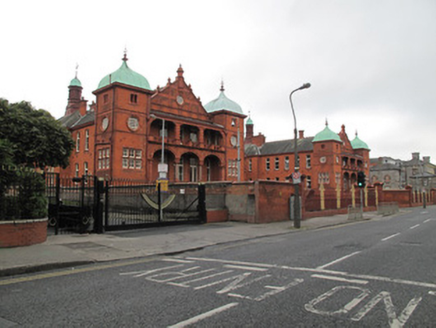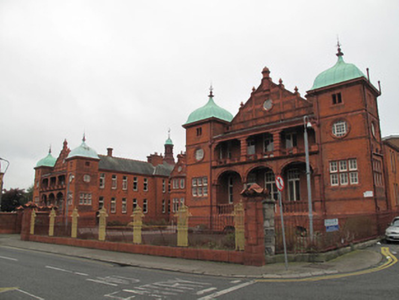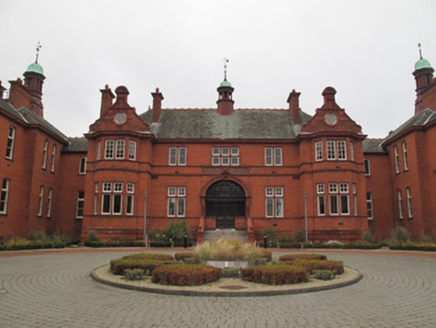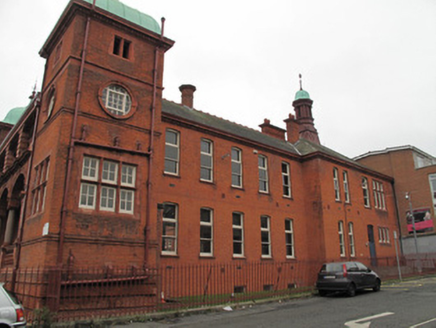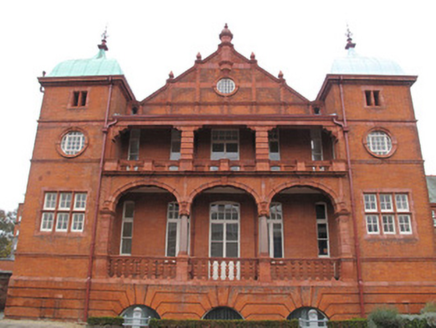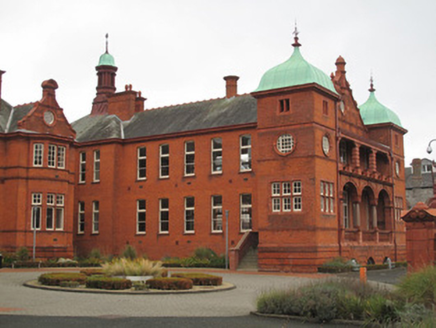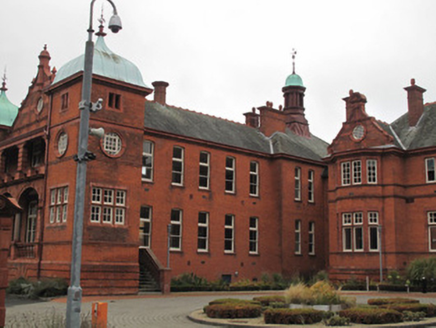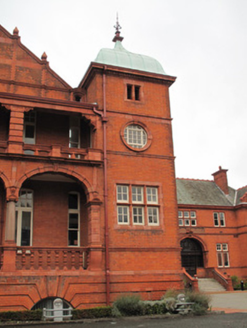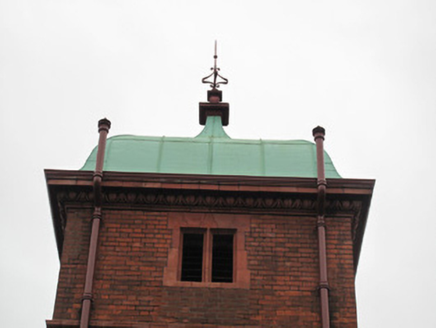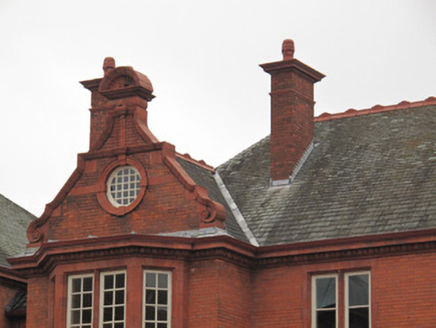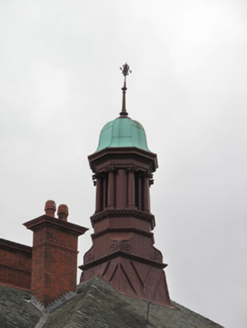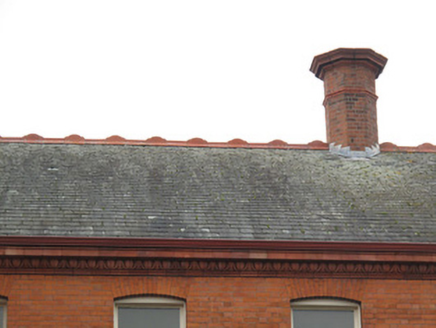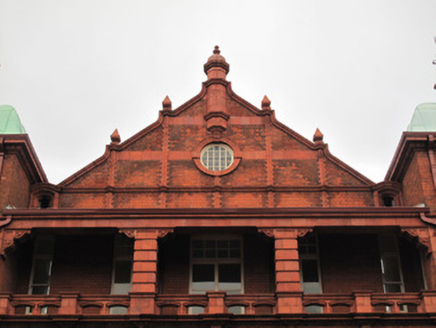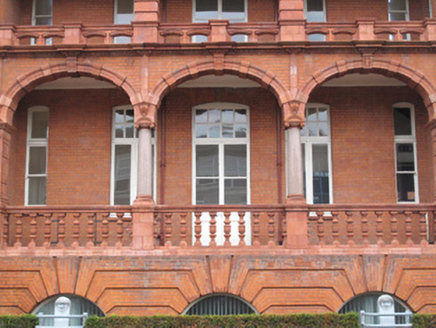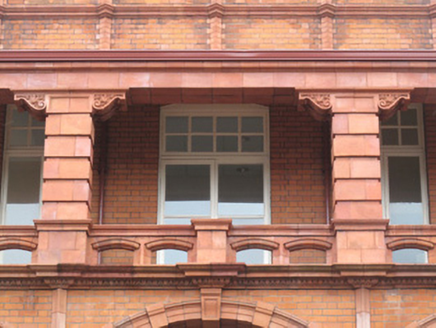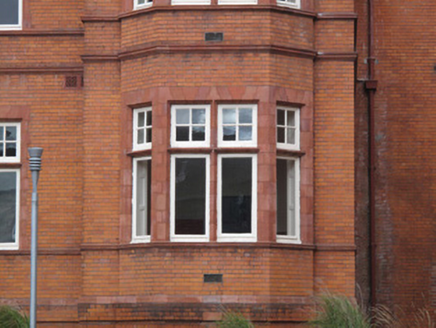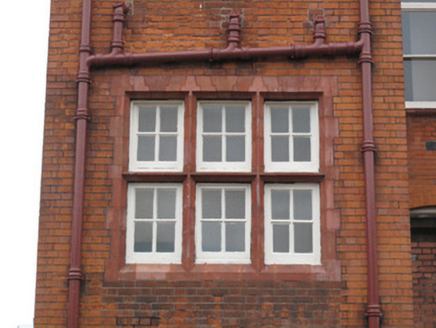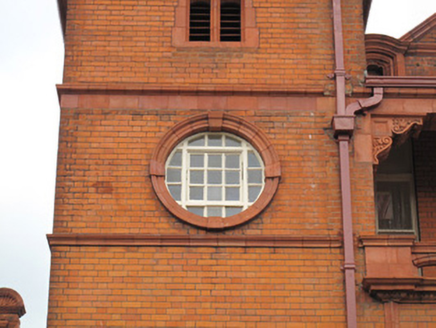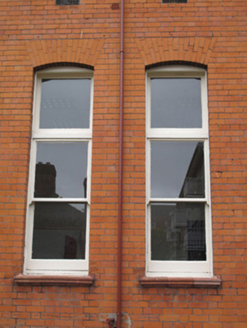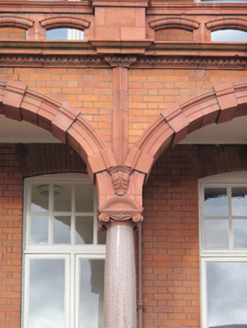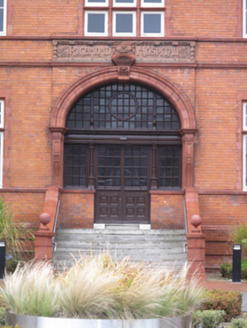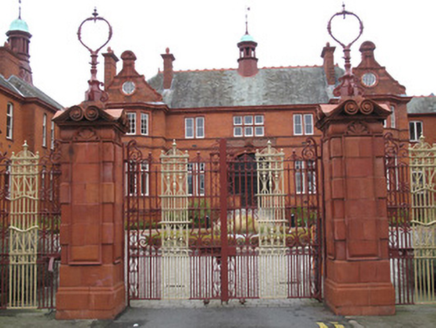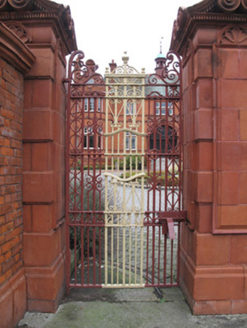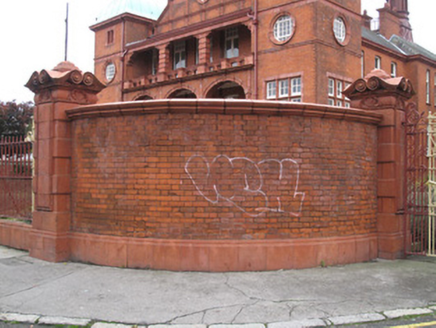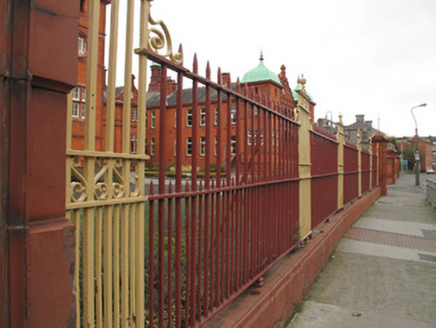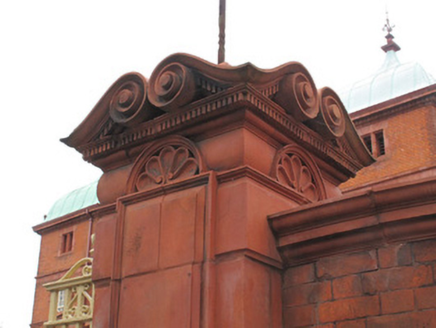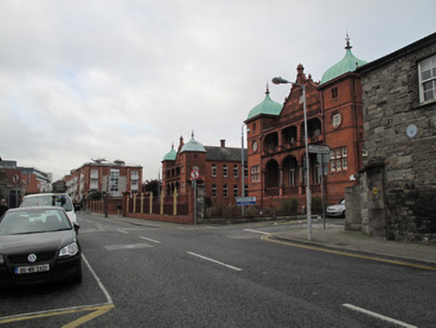Survey Data
Reg No
50070336
Rating
Regional
Categories of Special Interest
Architectural, Artistic, Historical, Social
Previous Name
Richmond Hospital
Original Use
Hospital/infirmary
Historical Use
Court house
Date
1890 - 1910
Coordinates
314823, 234791
Date Recorded
29/10/2012
Date Updated
--/--/--
Description
Detached U-plan former hospital, dated 1900, comprising five-bay two-storey centre block with gabled breakfronts to either end of front (south) elevation, having two-storey canted bay windows to each breakfront, adjoining seven-bay two-storey over half-basement gable-fronted pavilions, arcaded verandas to first and second floors of south elevation, flanked by square-profile three-stage corner towers. Hipped slate roofs having terracotta ridge cresting and finials, red brick chimneystacks and moulded clay chimneystacks, timber and terracotta Ionic colonnaded towers with copper ogee-domed roofs and finials over to centre block and pavilions. Dutch gables having moulded terracotta coping to gables to breakfronts. Cast-iron rainwater goods. Shaped gables with moulded terracotta coping and pointed finials, octagonal column finial, to gables to pavilions. Square-plan copper ogee-domes having wrought-iron finials to towers. Red brick cornice having moulded terracotta egg-and-dart motif over red brick, laid in Flemish bond, to walls. Moulded terracotta plinth course over channelled red brick to basement, moulded terracotta string courses forming continuous sill courses to first and ground floors and over ground floor, moulded terracotta string course and platbands to gables of pavilions and to towers. Elliptical-headed openings to arcade to ground floor of pavilions, moulded terracotta hood mouldings supported on polished granite columns, terracotta balustrade. Square-headed openings to arcade to first floor, channelled terracotta piers supporting canopy, moulded scrolled consoles, terracotta balustrade having segmental-headed openings. Moulded terracotta fascia over door to front, decorative surround and swags, reading: 'Founded A.D. 1772/Richmond Hospital/Rebuilt A.D.1900'. Square-headed ventilation openings to third stage of towers, block-and-start chamfered terracotta surrounds, mullions, timber louvered vents. Square-headed window openings, block-and-start terracotta surrounds, voussoirs, and chamfered mullions, timber frame windows. Segmental-arched window openings to east and west elevations of pavilions, red brick voussoirs, moulded terracotta sills and one-over-one pane timber sash windows with overlights. Segmental-arched window openings to interior of verandas having red brick voussoirs, moulded terracotta sills and timber frame windows. Oculi to second stages of towers and apices of gables, moulded terracotta surrounds and timber frame windows. Round-arched window openings to basement level to front, red brick voussoirs and timber frame windows. Round-headed door opening to front, moulded terracotta surround and hood moulding, supported on panelled pilasters. Double-leaf half-glazed timber panelled door, glazed sidelights on red brick risers, carved timber mullions with engaged Ionic columns supporting lintel, glazed leaded overlight. Door opens onto granite platform with steps, flanked by red brick retaining walls having terracotta coping, terminating in octagonal piers having ball finials. Pair of square-profile terracotta piers with moulded capping, panels and cast-iron finials, flanking double-leaf cast-iron gate, matching pedestrian gates to either side of main gateway. Red brick screen walls having terracotta coping and plinth courses, terminating in matching piers, matching cast-iron railings on moulded terracotta plinth wall to front of site.
Appraisal
This exuberantly-designed former hospital brings considerable colour and textural variation to the area, which is dominated by grey calp limestone. Built in an English Renaissance style, its relatively simple centre bay is enhanced by a subtle symmetry created by projecting end-bays and balanced pavilions, the colonnaded verandas of which were designed for the use of convalescent patients. Terracotta is used to great effect to enliven the red brick walls, and the variety of chimneystacks, gables, copper domes and turrets to the roof provides a remarkable silhouette. Designed by Carroll & Batchelor, this building has since been use as a courthouse, having undergone some remodelling by the OPW. A long standing myth states that the building was designed for a site in India during the days of the British Empire, however, the exuberant and vigorous style with ogee domes is simply characteristic of late Victorian architecture.
